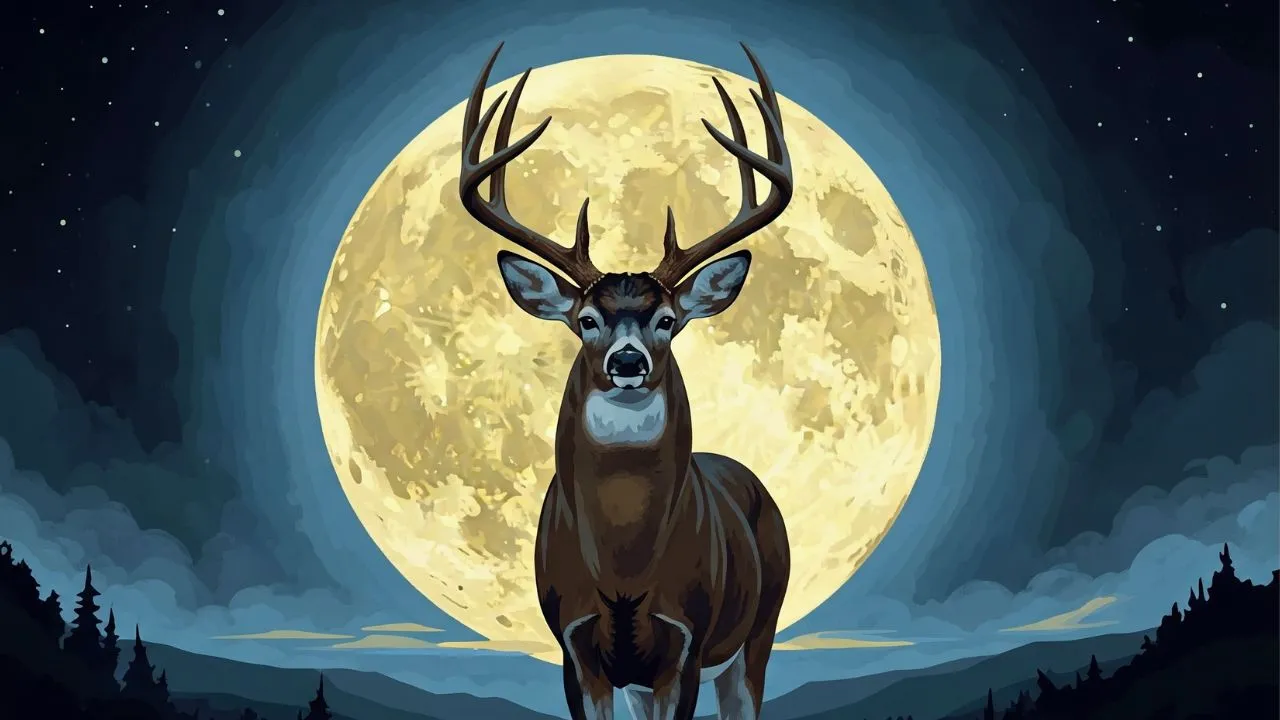July’s full moon, also known as the Buck Moon, will be visible in the night sky on Thursday, July 10, 2025, throughout the world. Don’t miss the opportunity to see the farthest and most exciting full moon of this year!
When to See the July Full Moon 2025?
The Buck Moon will reach its brightest point at 4:37 PM EDT on Thursday, July 10. However, it will become visible shortly after sunset, rising above the horizon in the southeast direction.
For those in the UK, clear skies are expected on Friday evening, July 11, making it an ideal time for viewing across the British Isles. To get the best view, find a spot with little light pollution and a clear sight of the eastern horizon.
What is the Buck Moon?
According to Farmer’s Almanac, the name comes from the Algonquin people, a Native American tribe, from the fact that male deer, or bucks, start to regrow their antlers around this time of year. It’s a yearly cycle where deer shed their old antlers and then grow a fresh set, and in July, that growth is truly kicking into high gear!
Alternative Names for July’s Full Moon
| Name (Origin) | Meaning |
|---|---|
| Thunder Moon (Native American tribes) | Refers to the frequent summer storms in North America. |
| Salmon Moon (American tribes) | Marks the approximate time salmon begin their seasonal migration. |
| Hungry Ghost Moon (China) | A traditional name used in China for this month’s full moon. |
| Feather Moulting Moon (Cree) | References animal cycles, specifically birds shedding feathers. |
| Berry Moon (Anishinaabe) | Signifies the time for berry ripening. |
Unique Features of this year’s Buck Moon
This year’s Buck Moon is special for a few reasons:
- Distant Full Moon: It is one of the farthest full moons of 2025, meaning it will look slightly smaller in the sky. This is because it occurs just a week after Earth reached aphelion (farthest point from the Sun in its orbit).
- Major Lunar Standstill: The moon’s path will be unusually low in the sky due to a rare event called a “major lunar standstill.” This phenomenon happens about every 18.6 years. This low position can make the “moon illusion” stronger, where the moon appears much larger when it’s close to the horizon.
- Guru Purnima: The Buck Moon sometimes falls on the same day as Guru Purnima, a festival celebrating teachers and wisdom in the Hindu calendar. This is because Guru Purnima occurs on the full moon of the Hindu month of Ashadha, which often lines up with July’s first full moon.
Viewing Tips
To enjoy the Buck Moon best, find a location with clear skies and minimal light pollution. Looking towards the southeast horizon as the moon rises is recommended. If you have binoculars, you might be able to see more details on the moon’s surface, like the bright Tycho crater or darker volcanic plains. Refer to Must-See Astronomical Events in July 2025.

